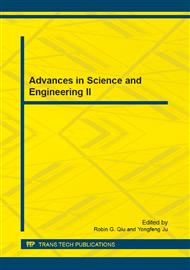[1]
KennethCNelson. ThenewworidofPowermarketing. ManagementQuarter1y. 1999. 8: 78一83.
Google Scholar
[2]
Energy Management System Application Program Interface(EMS-API)-Part 301: Common Information Mdel(CIM) Base[S]. Draft Iec 61790, (2002).
DOI: 10.3403/30211138
Google Scholar
[3]
Energy Management System Application Program Interface(EMS-API)-Part 401: Component Interface Specification Framework(CIM) Base[S]. Draft Iec 61790, (2002).
DOI: 10.3403/30309705u
Google Scholar
[4]
Distribution Management System Application Program Interface(DMS-API)-Part 11: Common Information Mdel(CIM) [S]. Draft Iec 61968 , (2002).
Google Scholar
[5]
Energy Management System Application Program Interface(EMS-API)-Part 403. Generic Data Access[S]. Draft Iec 61790, (2002).
DOI: 10.3403/30145411
Google Scholar
[6]
John C. Geographic Information Systems: a guide to the technoloty, New York: Van Nostrand Reinhold, (1991).
Google Scholar
[7]
Graeme F. Bonham-Carter, Geographic Information Systems for Geoscientists: modeling with GIS, Kidliington: OX Pergamgon, (1994).
Google Scholar
[8]
Michaal N.D. Fundamentals of geographic information systems, GEOMATIC(2), (1994).
Google Scholar
[9]
J. Han, and M. Kamber. Date Mining: Concepts and Techniques. Morgan Kaufmann Publishers, San Francisco, (2001).
Google Scholar
[10]
IEEE. TUTORIAL COURSE. DISTUIBUTION- AUTOMATION, (1998).
Google Scholar
[11]
Briton J P, Devos N. CIM-based standards and CIM evolution[J]. IEEE Trans on Power Systems, 2005, 20(2): 758-764.
DOI: 10.1109/tpwrs.2005.846202
Google Scholar
[12]
Becker D, Falk H, Gillerman J. Standards-Based Approach Integrates Utility Applications. IEEE Computer Applications in Power, 2000, 13(4): 13-20.
DOI: 10.1109/67.876871
Google Scholar
[13]
Farghal S A, Kandil M S, Elmitwally A. Quantifying Electric Power Quality via Fuzzy Modeling and Analytic Hierarchy Processing[J]. IEE Proceedings: Generation, Transmission and Distribution, 2002, 149(1): 44-49.
DOI: 10.1049/ip-gtd:20020006
Google Scholar
[14]
Ian B M. Modified cramervon mises goodness-of-fit tests for spectral distribution functions[J]. Stochastics An International Journal of Probability and Stochastic Processes, 1975, 1(1-4): 53-60.
DOI: 10.1080/17442507508833116
Google Scholar
[15]
Ong N S. Activity-based Cost Tables to Support Wire Harness Desigh[J]. International Journal of Production Economics, 1993, 29(3): 271-289.
DOI: 10.1016/0925-5273(93)90033-h
Google Scholar
[16]
Liang QingWei, Song BaoWei, Pan Guang. Fuzzy ideal point method for estimation of life cycle cost and effectiveness of torpedo weapon system[J]. Binggong Xuebao/Acta Armamentarii, 2006, 27(1): 137-140.
Google Scholar


